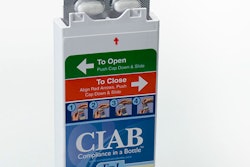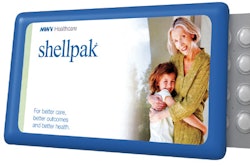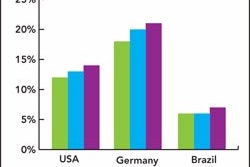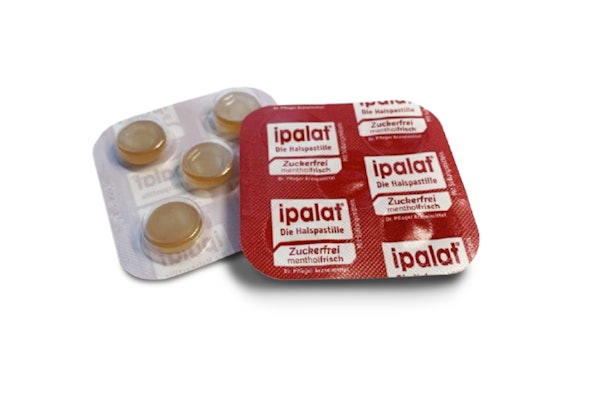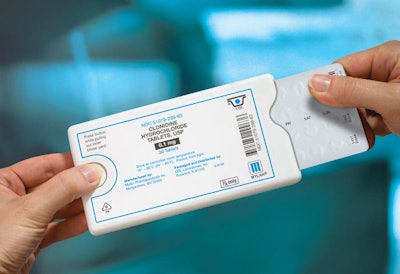
At first glance, sustainability and pharmaceutical packaging appear to be at odds with one another. Traditionally, in pharmaceutical packaging, safety—not environmental friendliness—is the top priority. Pharmaceutical packaging must adhere to stringent regulations that require material traceability, good manufacturing practices (GMPs), consistent quality, product protection, and often child-resistance.
Today, there is tremendous opportunity within the manufacturing practices and processes for pharmaceutical packaging to become more sustainable. Sustainability is approachable from a holistic perspective as a way to determine how to have a positive impact throughout the supply chain, not just the raw materials or the way the product returns to the life cycle. Sustainability requires an approach that is focused on technical, environmental, and social practices.
Below are six key points that can be applied from design to product delivery to ensure social, environmental, and economic sustainability benefits:
1. Design. Incorporating more sustainable design at the beginning of package development creates the opportunity to determine ways to reduce consumption. Understand your customers' exact needs, and develop a solution that meets goals surrounding manufacturing efficiency, consumer usage, branding, and market relevance. It is important to determine where changes can be made to make a package lighter in weight, structurally sound, and more machine-ready and efficient, with uncompromised product protection.
2. Efficiency. In the design process, create the most efficient form of packaging that minimizes impact on the environment and maximizes each step in the supply chain. For instance, prefilled medication packages have benefits to pharmacists, consumers, and the environment. This type of packaging helps expedite pharmacist handling, providing more time to consult with the consumer, and ensures consumers receive accurate medication. Plus, a rigid, sturdy outer package means there is no need for excessive shipping material like corrugated boxes. When the primary and secondary packaging steps are combined with the drugs into a single process at one location, this approach saves costs and energy throughout the supply chain.
3. Advanced technology. Advancements in technology and research are creating new options for more impactful, effective, and sustainable packaging. These developments include smart packaging applications, which can record and transmit real-time data, or use sound and light to communicate with the consumer. Developments also explore the use of new substrates to enhance the design and supply chain. These technologies better support consumers' adherence to their medication regimen, improve patient outcomes, and lead to longer-term wellness.
4. State-of-the-art machinery. Well-designed packaging should be implemented to existing equipment. Oftentimes, equipment can be recalibrated or enhanced to run more efficiently and with increased flexibility.
5. Streamlined transportation program. Efficient transportation contributes to a smaller carbon footprint. This increased efficiency can be achieved by reducing the weight of the overall package, eliminating tertiary packaging, and optimizing shipping routes and loads. Blister packages, for example, are shipped as fully loaded packages, ready for immediate distribution by pharmacists. Additionally, from a structural design perspective, they can be stacked, stored, and shipped more efficiently than standard amber vials.
6. Sustaining positive patient outcomes. Being socially sustainable also includes developing packaging that is effective, safe, and promotes medication adherence. Pharmaceutical industry research suggests that only half of the drugs prescribed in the U.S. are taken according to physician directions. Increased patient adherence results in better care, better outcomes, and better health. Effective adherence packaging has a positive impact on health outcomes. For example, convenience blister packs are designed to remind patients to take medications correctly and on time, reducing patient medication omissions and errors, and enhancing the treatment outcomes of those medications.
With the right design, practices, and technologies, sustainability and pharmaceutical packaging can, and should, go together hand-in-hand.
-By Dr. Ted Lithgow, President, MWV Healthcare
Dr. Ted Lithgow is the president of MWV Healthcare, responsible for leading development and strategic direction, and facilitating commercial strategy and implementation of all MWV products targeted for pharmaceutical and healthcare customers. Also a psychopharmacologist trained at The City University of New York and Albert Einstein College of Medicine in Bronx, NY, Lithgow has held senior
Rx and OTC commercial leadership positions in marketing and R&D at Schering-Plough, Pharmacia (Pfizer), Wyeth, and Warner Lambert.
Today, there is tremendous opportunity within the manufacturing practices and processes for pharmaceutical packaging to become more sustainable. Sustainability is approachable from a holistic perspective as a way to determine how to have a positive impact throughout the supply chain, not just the raw materials or the way the product returns to the life cycle. Sustainability requires an approach that is focused on technical, environmental, and social practices.
Below are six key points that can be applied from design to product delivery to ensure social, environmental, and economic sustainability benefits:
1. Design. Incorporating more sustainable design at the beginning of package development creates the opportunity to determine ways to reduce consumption. Understand your customers' exact needs, and develop a solution that meets goals surrounding manufacturing efficiency, consumer usage, branding, and market relevance. It is important to determine where changes can be made to make a package lighter in weight, structurally sound, and more machine-ready and efficient, with uncompromised product protection.
2. Efficiency. In the design process, create the most efficient form of packaging that minimizes impact on the environment and maximizes each step in the supply chain. For instance, prefilled medication packages have benefits to pharmacists, consumers, and the environment. This type of packaging helps expedite pharmacist handling, providing more time to consult with the consumer, and ensures consumers receive accurate medication. Plus, a rigid, sturdy outer package means there is no need for excessive shipping material like corrugated boxes. When the primary and secondary packaging steps are combined with the drugs into a single process at one location, this approach saves costs and energy throughout the supply chain.
3. Advanced technology. Advancements in technology and research are creating new options for more impactful, effective, and sustainable packaging. These developments include smart packaging applications, which can record and transmit real-time data, or use sound and light to communicate with the consumer. Developments also explore the use of new substrates to enhance the design and supply chain. These technologies better support consumers' adherence to their medication regimen, improve patient outcomes, and lead to longer-term wellness.
4. State-of-the-art machinery. Well-designed packaging should be implemented to existing equipment. Oftentimes, equipment can be recalibrated or enhanced to run more efficiently and with increased flexibility.
5. Streamlined transportation program. Efficient transportation contributes to a smaller carbon footprint. This increased efficiency can be achieved by reducing the weight of the overall package, eliminating tertiary packaging, and optimizing shipping routes and loads. Blister packages, for example, are shipped as fully loaded packages, ready for immediate distribution by pharmacists. Additionally, from a structural design perspective, they can be stacked, stored, and shipped more efficiently than standard amber vials.
6. Sustaining positive patient outcomes. Being socially sustainable also includes developing packaging that is effective, safe, and promotes medication adherence. Pharmaceutical industry research suggests that only half of the drugs prescribed in the U.S. are taken according to physician directions. Increased patient adherence results in better care, better outcomes, and better health. Effective adherence packaging has a positive impact on health outcomes. For example, convenience blister packs are designed to remind patients to take medications correctly and on time, reducing patient medication omissions and errors, and enhancing the treatment outcomes of those medications.
With the right design, practices, and technologies, sustainability and pharmaceutical packaging can, and should, go together hand-in-hand.
-By Dr. Ted Lithgow, President, MWV Healthcare
Dr. Ted Lithgow is the president of MWV Healthcare, responsible for leading development and strategic direction, and facilitating commercial strategy and implementation of all MWV products targeted for pharmaceutical and healthcare customers. Also a psychopharmacologist trained at The City University of New York and Albert Einstein College of Medicine in Bronx, NY, Lithgow has held senior
Rx and OTC commercial leadership positions in marketing and R&D at Schering-Plough, Pharmacia (Pfizer), Wyeth, and Warner Lambert.
